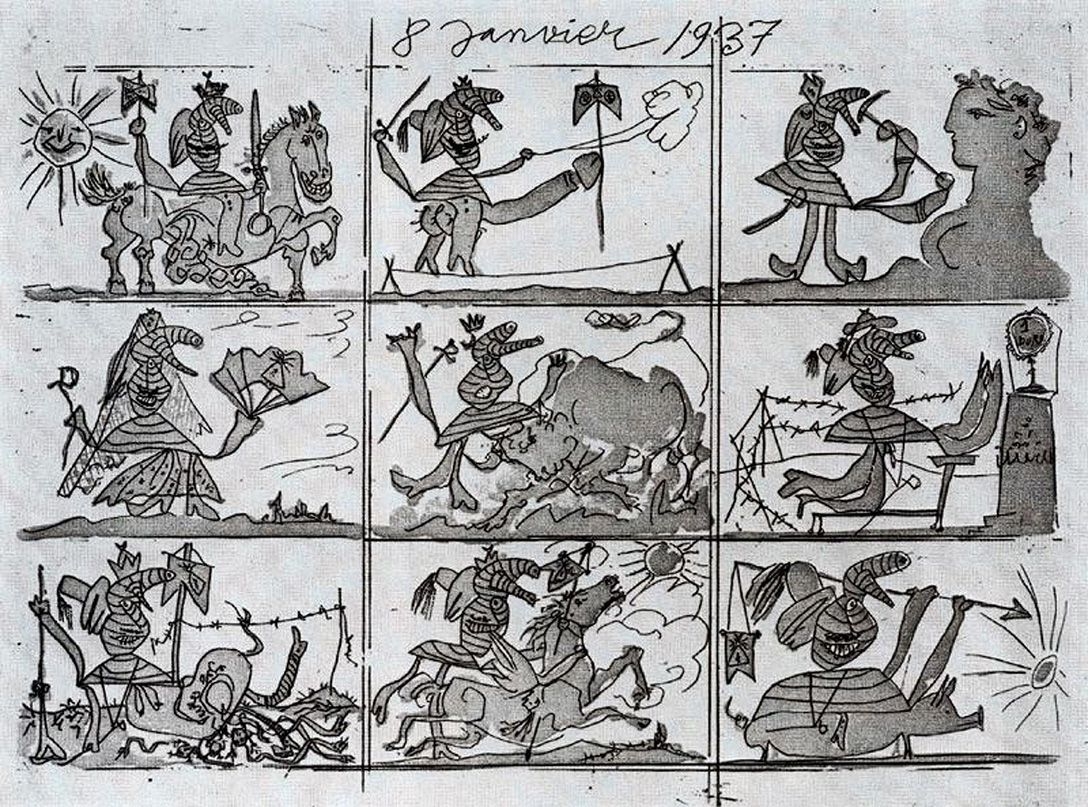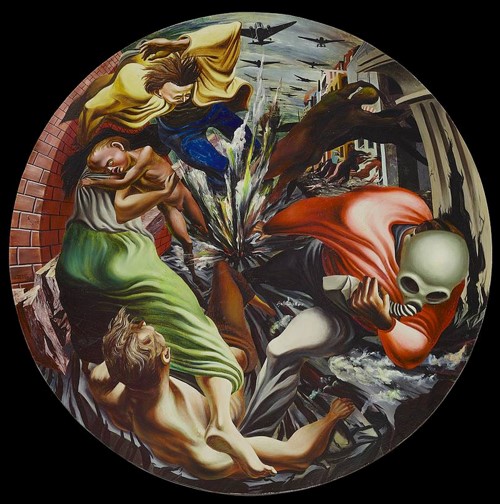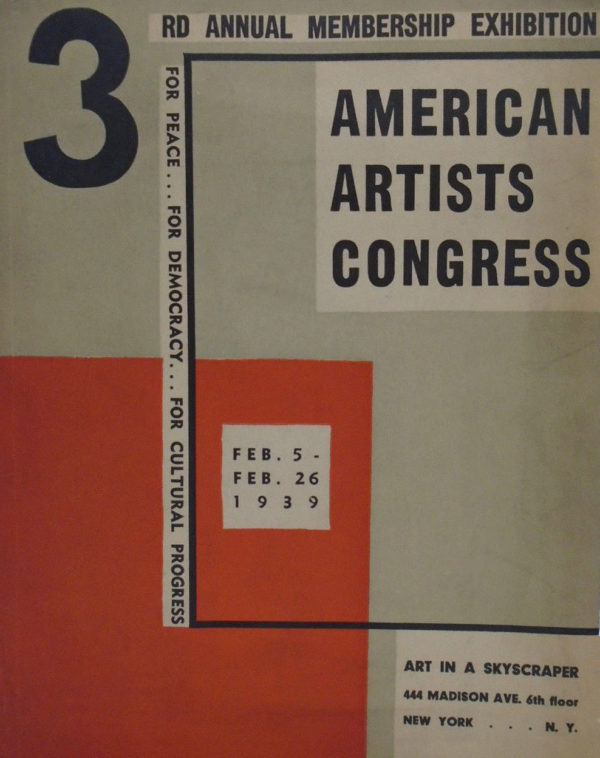Exhibition in Defense of World Democracy: Dedicated to the Peoples of Spain and China
The exhibition accompanied the second AAC congress during which the organization officially condemned the rise of fascist forces in Spain, Hitler’s and Mussolini’s threats of intervention in the conflict and the aggression of Imperial Japan against China. Although the exhibition was originally planned as a response to those particular political developments, ultimately the theme was broadened to include a range of works tackling many different aspects of not only fascism and war but also violence, exclusion and injustice in everyday life. According to Henry Glitenkamp writing in the exhibition catalogue, the show focused on:
”curtailment of civil liberties, strikes, police brutalities etc. […] or any work depicting undemocratic procedure and the exploitation or enslavement of labor” K. Bearor, Irene Rice Pereira: Her Paintings and Philosophy, University of Texas Press, Austin, 1993 s.53.↩︎.
The exhibition consisted of anti-fascist and anti-war works by such artists as Philip Evergood, William Gropper, Anton Refregier, Minna Harkavy, Lynd Ward, Irene Rice Pereira, Moses Soyer and Yasuo Kuniyoshi. Although formally all iterations of the exhibition opened simultaneously were supposed to be of equal rank, the New York show was clearly bigger and had more works on display, for instance Philip Guston’s Bombardment (or a paper sketch made in preparation for the painting) being the American artist’s reaction to press articles describing the violence and atrocities during the Civil War in Spain.
The New York show also presented the works of young Spanish students and a series of Pablo Picasso’s anti-Franco etchings called the Dream and Lie of Franco some of which prefigured the famous Guernica. The individual images were originally intended to be published as postcards to raise funds for the Spanish Republican Government. The idea did not work at the time but was later revived by the members of AAC who during the exhibition sold postcards with the reproductions of Gropper’s, Kuniyoshi’s and Ward’s drawings. All the proceeds from the sale were spent on support for the Spanish anti-fascists.
The exhibition attracted a large audience but had mixed reviews from the critics and was the first sign of losing the momentum by AAC which until then had been a very dynamic organization. The critics were clearly disturbed by the attitude of the Congress members, their active engagement and open manifestation of political views through their works. In his review of the exhibition, Edward Alden Jewell, the New York Times’ principal art critic, complained that:
„the ideals [embraced by the artists] were more »necessary« than is most of the art. For propaganda is one thing and paint is something else” D. McCarthy, American Artists against War, 1935 – 2010, University of California Press, Berkeley, s.19.↩︎.




